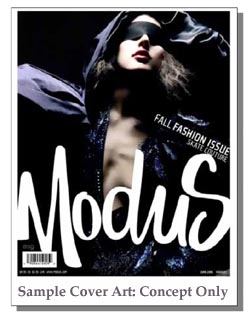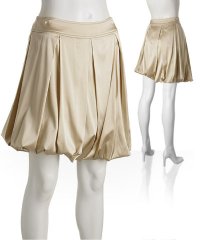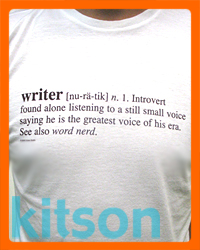What’s new in fashion media? We can’t wait to see the Modus Project, a Southern California-inspired fashion magazine (and web site and fashion event) created by the students at Otis College of Art + Design. Read on to hear–straight from publisher Don Meek’s mouth–what makes the Modus Project special, the inspiration behind the project, and a sneak preview of what the magazine will feature.
Omiru: In a nutshell, what exactly is the Modus Project, and what makes it unique?
 Don: The Modus Project is a fashion, culture and lifestyle magazine, web site and fashion event. It’s a collaboration between Primedia’s Action Sports Group (ASG) and the students at Otis College of Art + Design. We (at the ASG) provide the publishing backend, but the kids at Otis are the creative engine behind the Modus Project.
Don: The Modus Project is a fashion, culture and lifestyle magazine, web site and fashion event. It’s a collaboration between Primedia’s Action Sports Group (ASG) and the students at Otis College of Art + Design. We (at the ASG) provide the publishing backend, but the kids at Otis are the creative engine behind the Modus Project.
O: What was the inspiration behind the Modus Project?
D: The project really is an outgrowth of our desire to play in the juniors space. We were closing SG magazine (a magazine geared towards surfing girls), and I thought there had to be a way that we could cover fashion and the energy of the Southern California culture. I had heard about Otis from the CEO of QUIKSILVER, Bob McKnight, he’s on the board and his daughter goes to school there. They were doing a fundraiser last October, and Bob asked us to buy a table. It was a great cause, so of course we agreed. I was driving down the road the day we announced that we’d be ceasing publication of SG , and it hit me that we could partner with the students at Otis and create a whole new kind of fashion publication.
O: How is the staff organized?
D: The students are organized into four teams, each with an art director and a photographer, and each team is responsible for a photo-driven 12-page story.
 O: Can you give us a preview of what’s going to be in the magazine?
O: Can you give us a preview of what’s going to be in the magazine?
D: The four story ideas are (1) Extended Family, which uses the family metaphor to explore Southern California lifestyle culture, (2) City of Angels, which follows a tribe of skateboarders going from Venice Beach down to Downtown LA with post-apocalyptic imagery, (3) Lineup, which explores interesting fashion juxtaposed against very pedestrian lines (e.g. the line at Starbucks, the line at the bathroom, etc), and (4) Neurotica, my personal favorite, which gives fashion prescriptions for people’s fears. For fear of heights, for example, we have a six foot tall model on six inch platform heels, surrounded by a sea of little people. It’s psychologically interesting.
O: How long did it take to transform the Modus Project from idea to reality?
D: It was last September that we first started talking about the project. I met with the president of the school and the head of the fashion department. In October, I met with the school’s department chairs. We collectively decided to make this a Spring semester project for the students. It was really a perfect fit between Otis, and us, since they were already looking for an interdisciplinary project with a tangible result. We’re hoping to make the Modus Project a permanent part of the Otis curriculum.
O: What other magazines, if any, served as inspiration for the Modus Project?
D: Paper, Nylon, Black Book, Look-Look, and Monster Children from Australia are among our inspirations. However, our format is different. We have an oblong format. Plus, we’re distributing in polybags, so we can do things with the cover that we couldn’t if it were in a traditional newsstand format.
O: What sort of things are you free to do with this alternative format?
D: For one, we don’t have to worry about cover blurbs. We can also put our logo in a different place. Normally, we’d have to adhere to certain conventions, but since it’s not being sold on a newsstand, we can experiment much more freely.
O: Tell us a little more about your background and how you got here.
D: I’m from a media and entertainment background but have been part of the surf industry off and on for a long time,. As a lifelong surfer my questions are: How do you serve a growing market that has limited options? How do you communicate its vitality, energy, and the interest of this Southern California lifestyle? And how do you do it in a way that makes sense? We have sports, the beach, music, and fashion. There’s really a big cultural divide between here and New York, and there hasn’t been a translation of it that has felt authentic. Not to diss Elle and Vogue, but unless you’re a part of this world, it’s hard to get the nuance and the subtleties right.
O: Do explain.
D: Ok, A catalog came in the mail, and I asked my 17 year-old daughter to look at it. She wrote it off after a quick glance. The catalog had teen girls selling swimwear and surfwear, and they got a bunch of models who didn’t surf to do it. It was all wrong…if it were music, I would say that it was off key. The Modus Project is about making sure we’re on key. Really, authenticity is everything, and I feel that we’re in great hands because these kids [from Otis] are the real deal. They’re working artists and designers and are the next generation.
O: Describe your role as publisher of the Modus Project.
D: I’m the head cheerleader for the project. My job is to see that all of the resources are lined up, to get the information to the marketplace, to make sure that the reps understand what it is, to communicate clearly what the value proposition to the advertisers is. In short, it’s my job to run this thing—to empower the creative side, and yet run it as a business.
O: How do you manage that?
D: I’m fortunate to have been part of business organizations with robust creative functions, and while I’m not a “creativeâ€, I love the process and the energy that goes into it.. It’s all about setting up the framework and structure. The rest of it is easy.
O: About what feature of the Modus Project are you most excited?
D: That we’re giving these kids something real that they can have their name on when they leave school. I love watching them light up when we tell them that a million people will be seeing their work. There’s a little bit of a leap of faith that they can pull this off. But having seen their work, and seeing their contributions, I have no doubts that they’ll do just fine.
O: What’s it like to work with the students?
D: Mindblowing. We get stuck in our world of making magazines, and through this project, I think we’re working with some of the best creatives in the industry. These students bring a whole new way of looking at things. I’m amazed by their versatility. They know Illustrator, Photoshop, Flash—when you walk through a list of creative tools, you see that they know everything. I’m amazed by how much they get done with nothing to work with—they’re so resourceful!
O: Give us an example of their resourcefulness.
D: At first, we thought the graphic design kids were just laying out the stories. But they also wanted to help design the logo and the cover. The things they came back with in their first round, with nothing more than a verbal creative brief, were astounding. One girl shot the photos for her cover herself and handlettered and handtinted the art. It was as good as anything you’d see on the newsstands today.
O: What challenges have you faced?
D: We’ve actually had very few crises, and we have had no lack of energy. If anything, we probably want more of the students’ time than they can give us! Case in point: we’re working with a major auto retailer, and they want the students to design the ad for them.
O: Describe the launch of the Modus Project.
D: We’re launching in September 2006 at the Action Sports Retailer Tradeshow with a sheltered launch concept with a 250,000 guaranteed rate base. We’re inserting them in polybags and packaging them with Surfing, Surfer and Snowboarder magazines. We’re also placing our overruns in higher end boutiques such as Fred Segal and Kitson. Research tells us that our readers tend to be influential in their peer groups.
O: Who is the audience for the Modus Project?
D: We’re looking for a national audience. We think that the Southern California lifestyle is universal in appeal. It has a lot of energy that influences rest of the world. There are several cultural axes that the world revolves around—New York, Shanghai, Milan, California. For youth culture, in particular, Southern California is one that’s pretty important.
O: What’s the next big step for you post-launch?
D: In May, we’re going to sit down with the kids, the faculty, and the admins to see if they want to do it again. If they want to, we will immediately get to work on Spring 2007 as a fall semester project.
O: Last words?
D: The Modus Project is really a win-win for both us and Otis. We’re covering fashion territory that we otherwise couldn’t, and we’re giving the Otis students a creative outlet—and money for the pages they’re creating.
Look for the Modus Project this September at Barnes and Noble, packaged with Surfer, Surfing, or Snowboarder magazines.
April 21st, 2006


 We just like rope. And belts.
We just like rope. And belts. Don: The Modus Project is a fashion, culture and lifestyle magazine, web site and fashion event. It’s a collaboration between Primedia’s Action Sports Group (ASG) and the students at Otis College of Art + Design. We (at the ASG) provide the publishing backend, but the kids at Otis are the creative engine behind the Modus Project.
Don: The Modus Project is a fashion, culture and lifestyle magazine, web site and fashion event. It’s a collaboration between Primedia’s Action Sports Group (ASG) and the students at Otis College of Art + Design. We (at the ASG) provide the publishing backend, but the kids at Otis are the creative engine behind the Modus Project. O: Can you give us a preview of what’s going to be in the magazine?
O: Can you give us a preview of what’s going to be in the magazine?